The casualty count of the Battle of the Somme
A detailed account of the Battle of the Somme, highlighting the enormous human cost and its profound impact on the nations involved.
A few months ago, thanks to an article by
in Cosmographia, I discovered Albert Kahn's wonderful photographic collection. The amount of time I spent that day is not worth mentioning and, although it will take you a long time, I recommend that you take a look too.The photographic collection, known as The Archives of the Planet, was a project with which Albert Kahn sought, in his own words, to “fix once and for all, the look, practices, and modes of human activity whose fatal disappearance is just a question of time”. From 1908 to 1931, Kahn worked with several photographers on multiple expeditions in which they travelled through 50 countries and obtained more than 72,000 colour snapshots1.
Among all these photographs, one of the most popular, and the one that appears in the most places, is this trench in the Somme department in 1915.
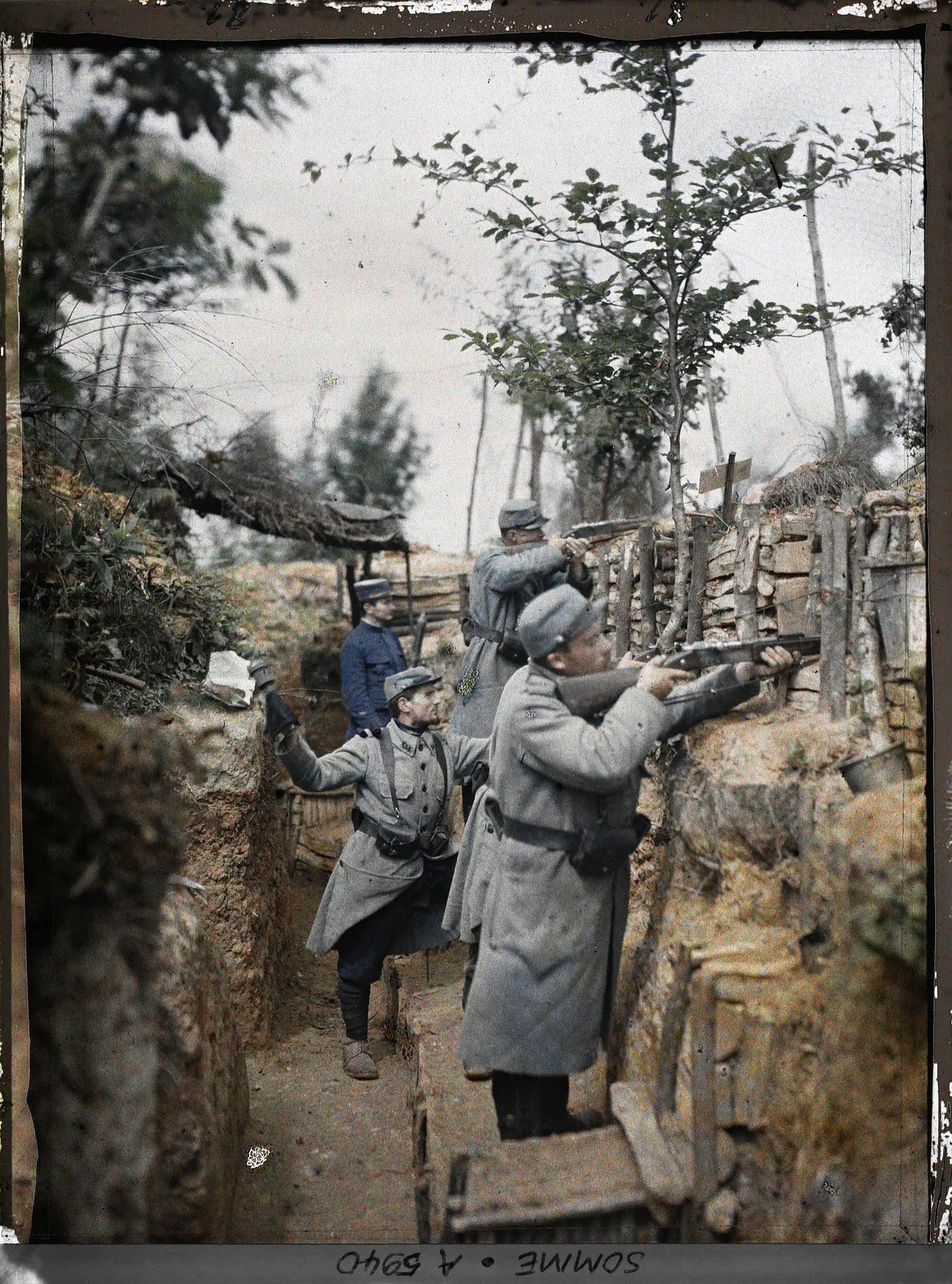
Despite what can be inferred from the image, and the title with which it appears in the collection, the Battle of the Somme did not begin until July 1, 1916, while this photograph was taken on August 9, 1915, almost a year earlier. Upon further investigation, I found that a fifth of Kahn's collection shows machinery and situations from the First World War, but not many were taken at the front. This particular photo is nothing more than a pose to showcase the trenches being built in the Somme department, as well as the military equipment available to the French army.
The four soldiers in the photograph did not go into combat that day, but they very probably did in the years that followed. The First World War was one of the most costly conflicts in European history, largely due to its substantial human costs. The Battle of the Somme, in particular, was the bloodiest of them all.
The Western Front in the First World War
Until the outbreak of the Great War, humanity had not known another military conflict on a similar scale. There have been clashes between countries and even great alliances, but in none of them involved belligerent countries on every continent in the world2.
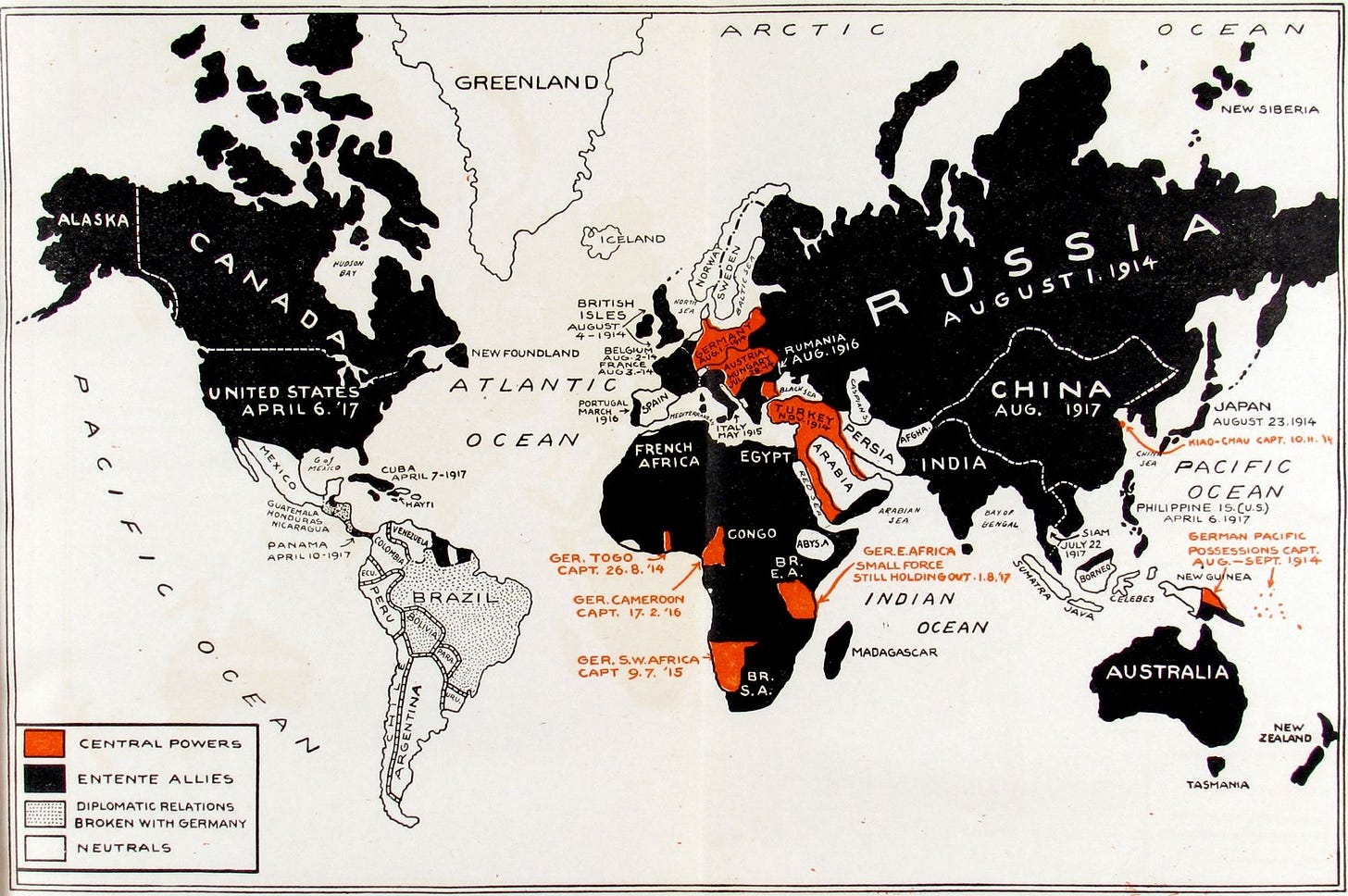
Despite being a global conflict, the war was not suffered globally. The Americas had countries involved, such as the United States or Brazil, but no battles were fought on its territory. In the Pacific Ocean, the Japanese and Australians took over the small German colonies in the region. There were big fights in Asia, Africa, and the Middle East, but most of the bullets and cannon shots were fired in Europe. The Great War, despite having gone down in history as the First World War, was actually a war between European colonial powers with consequences for everyone on the planet.
The toughest fighting took place in Europe. On the Eastern Front, Russia fought the Central Powers at various points, with the characteristic dynamism of a vast territory without major infrastructure. Germany managed to penetrate Russia, just as Russia did the Austro-Hungarian Empire. The armies advanced and retreated, becoming embroiled in long-lasting battles in very few places. There were multiple casualties, but many of these were due to disease and the lack of resources caused by the region's logistical problems.
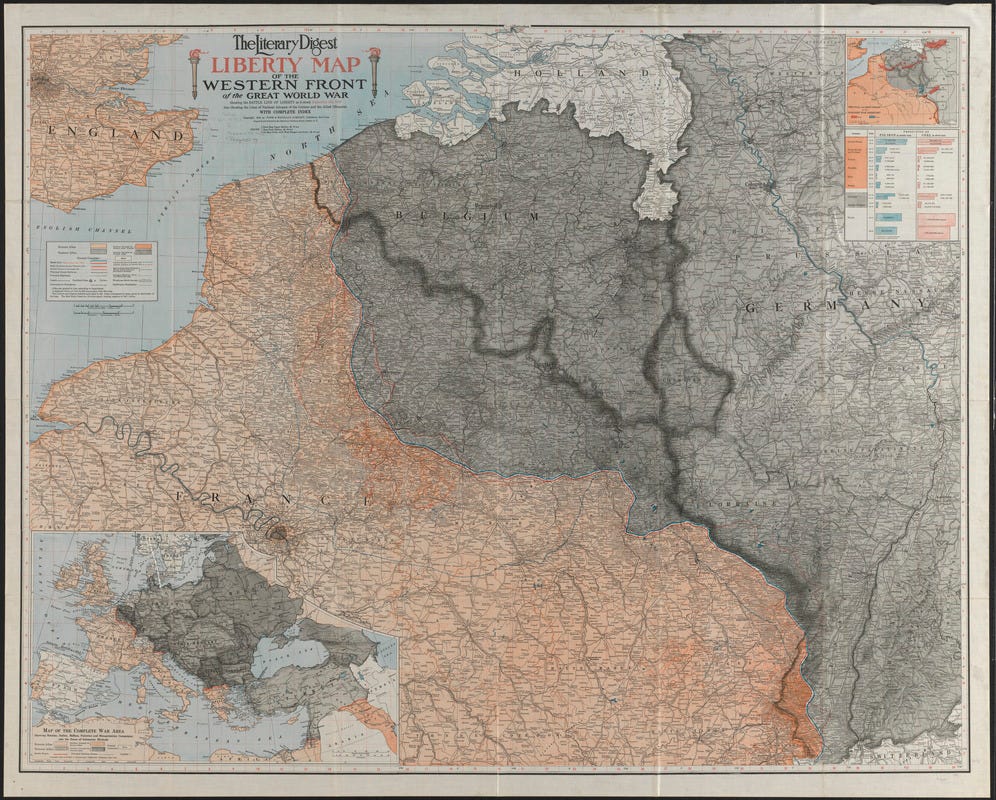
On the Western Front, the story was quite different. After Germany invaded Luxembourg and Belgium in a few months, it tried to enter France and quickly stalled. Unlike the Eastern Front, here Germany came up against a densely populated territory, with a large industry and infrastructure and much to defend. Both sides built up a practically continuous chain of trenches from the North Sea to the Alps, along which the Germans faced the British and French for more than three years, with practically no progress on either side.
This lack of dynamism concentrated the war in a few places, inflicting a deep wound that would take many years to heal. In some specific locations and at certain times, the confrontation worsened, giving rise to sad chapters in the history of Europe such as the Battle of Verdun or the Battle of the Somme, our protagonist today.
The Battle of the Somme
In February 1916, the Germans launched one of the most important offensives on the Western Front and attacked the department of Meuse. Although the German troops managed to advance in the early days, they soon stalled around the Meuse River, north of Verdun. There, the battle between the Germans and the French became entrenched, mobilizing a considerable part of the armies and causing numerous casualties.
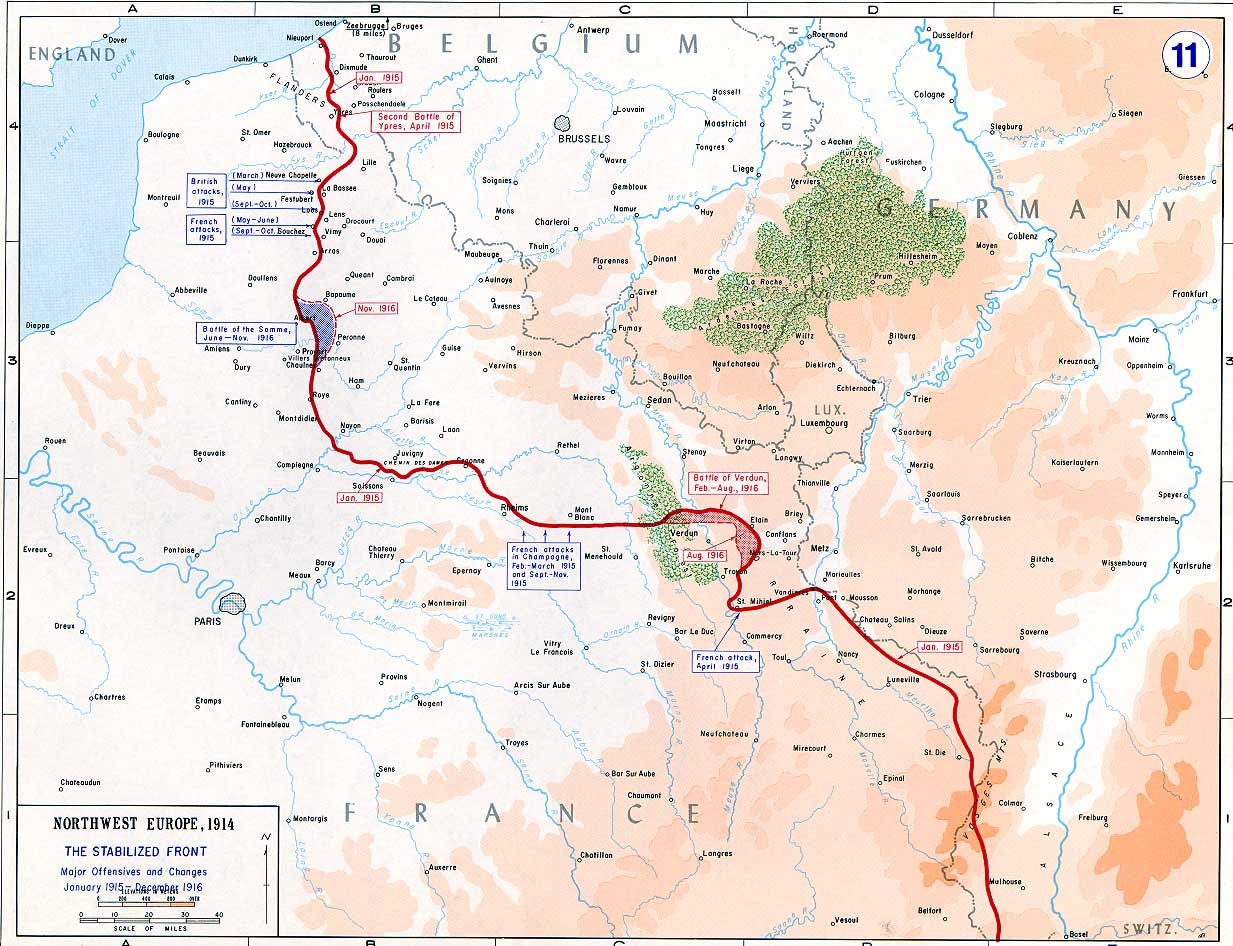
To relieve pressure on Verdun and with the aim of regaining positions, the British and French armies launched an offensive further north, in the Somme department, on July 1, 1916. After a week of bombardments, the British army advanced into enemy territory, only to find a German defence line that had been under construction for several months. This prevented the Allies3 from advancing at the expected speed, turning the Somme department into a new Verdun.
The fighting continued for four and a half months, during which time the positions hardly changed. There was some progress made by the Allies, but in the most successful places they barely advanced 10 kilometres. The trench warfare reached its peak during these months in this place.
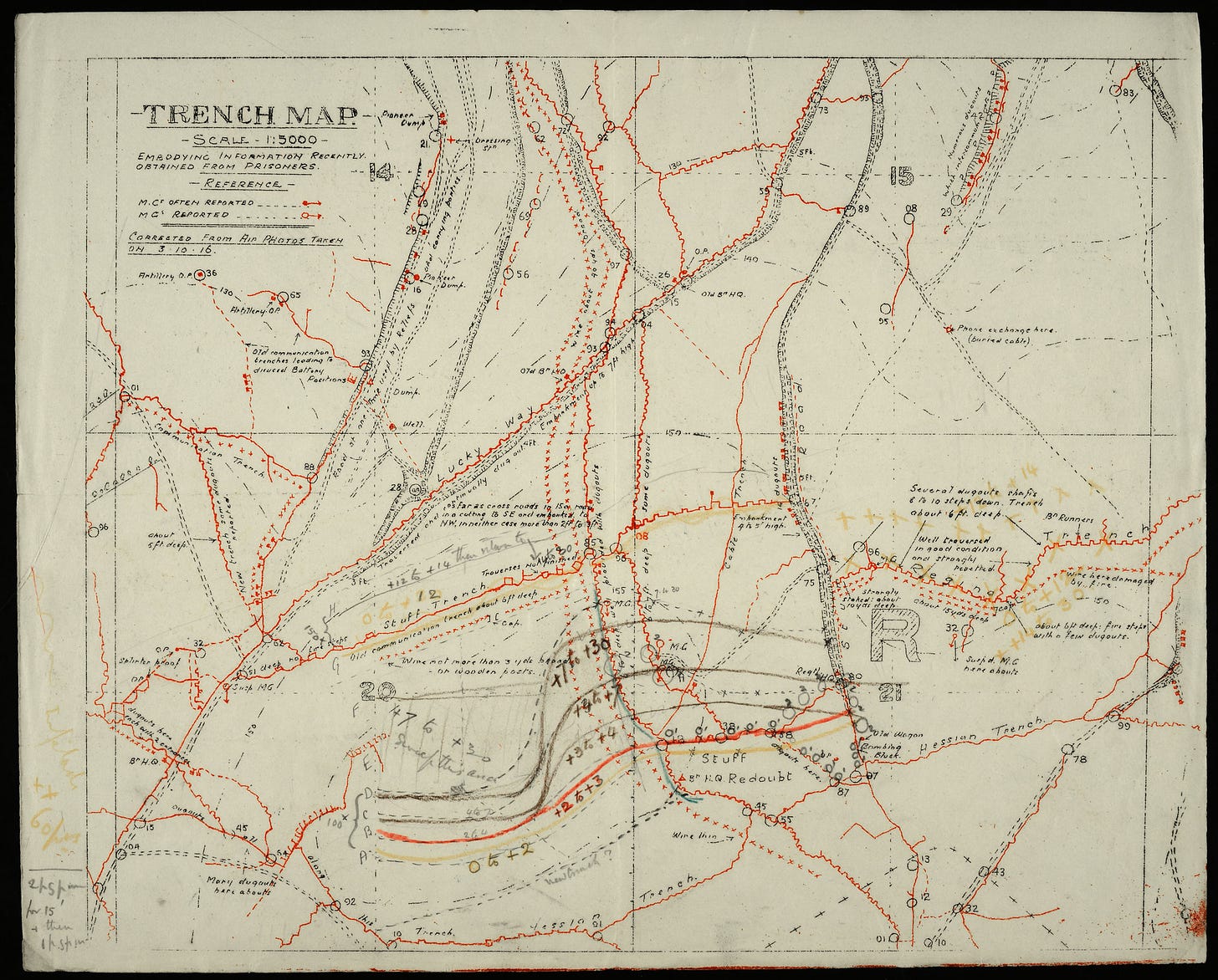
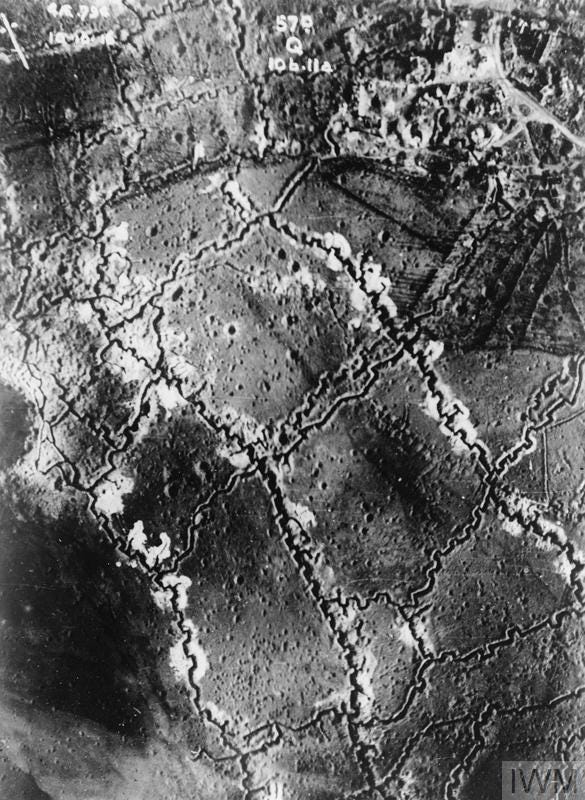
Those trenches had little to do with those portrayed by Albert Kahn in his archives. The reality of the battle was not one of iconic poses, but of overcrowding, continuous artillery bombardment and living alongside wounded and sick comrades. In probably too many cases, even corpses, given the inability to give them a dignified burial4. It was 141 days of horror in which the British, French and Germans, defending the interests of their rulers, faced each other in an attempt to win this decisive battle.
The consequences of the battle
World War I resulted in more than 10 million military personnel killed in combat, well over 20 million wounded soldiers and 13 million civilians killed. These losses were concentrated among young men of working and procreative age, which had a strong impact on post-war dynamics in countries such as the United Kingdom and France.
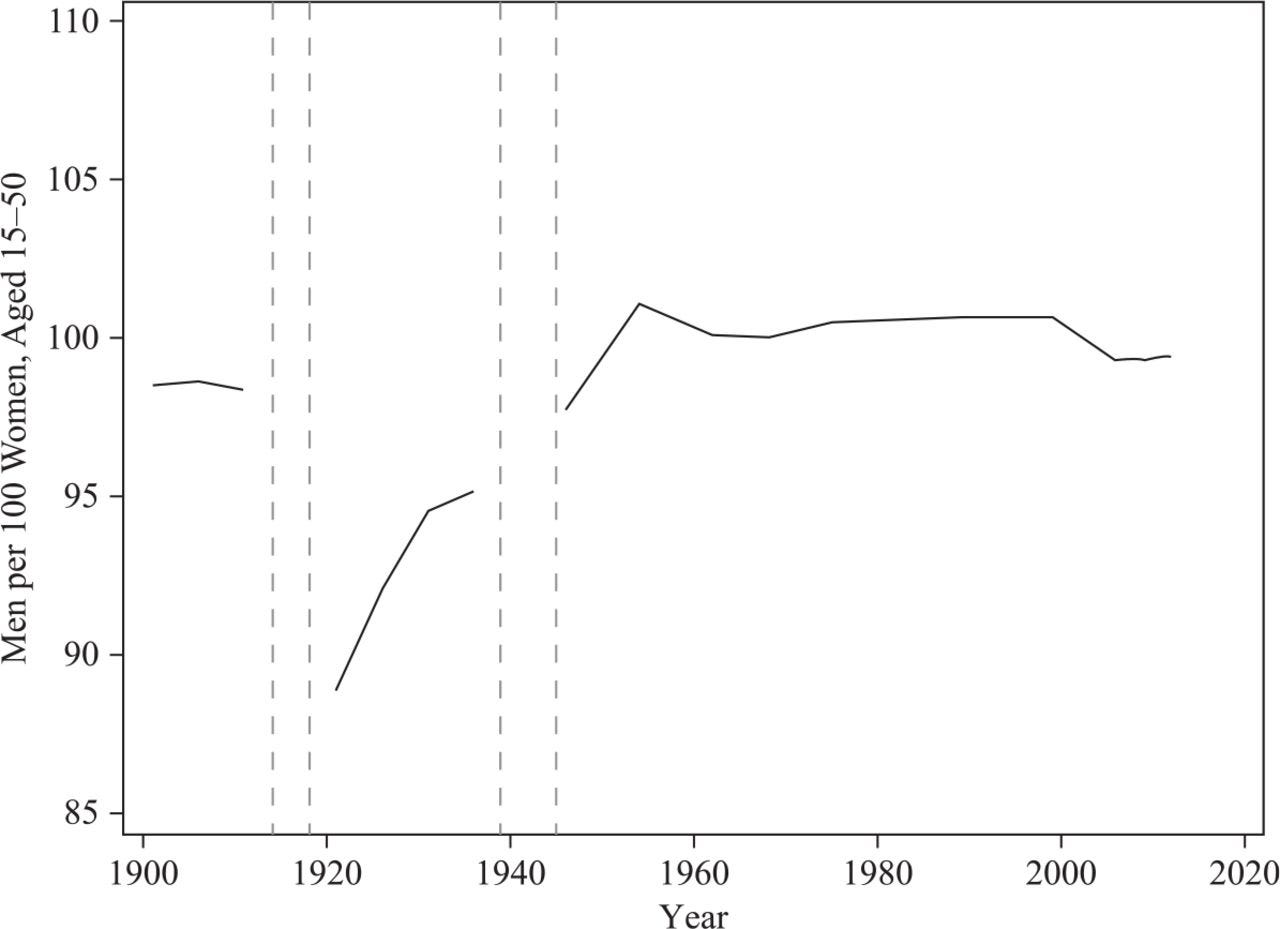
The Battle of the Somme caused beyond one million casualties5: 420,000 British, 200,000 French and 500,000 German6. On the first day alone, when the British realized it wasn't going to be so easy, more than 30,000 soldiers were killed and another 60,000 were wounded.
I know it's very difficult to get your head around what this means, so I want to bring a map that, when I found it years ago, really shocked me. The map below, a documentary gem, is for which I have prepared the entire previous introduction. It is a count of the bodies found on the battlefield of the Somme, made by Lieutenant Colonel Arthur Albert Messer in 1918, more than a year after the battle ended.

The map depicts the region where the Battle of the Somme took place. The whole territory is divided into large grids, labelled with letters, which in turn are subdivided into smaller grids, labelled with numbers, which are also divided into four smaller grids. Each of these small squares represents an area of 75 × 75 meters, smaller than the minimum size of a football field7.
All the numbers that appear in blue, handwritten by Messer, show the number of bodies found in each of the grids. There are points where one digit is enough, but around Delville Wood the number approaches 1,000. To try to understand what Messer found, this would be the equivalent of a fallen soldier every two meters, in all directions.
Despite the abstraction of the map, necessary to capture the idea, we must not forget what each of those numbers represents. A young person who left home to fight for a cause that he possibly never fully understood. A life cut short, who could not return to start a family, who did not get to grow old and enjoy the good things in life, who did not even have the good fortune of a dignified burial.
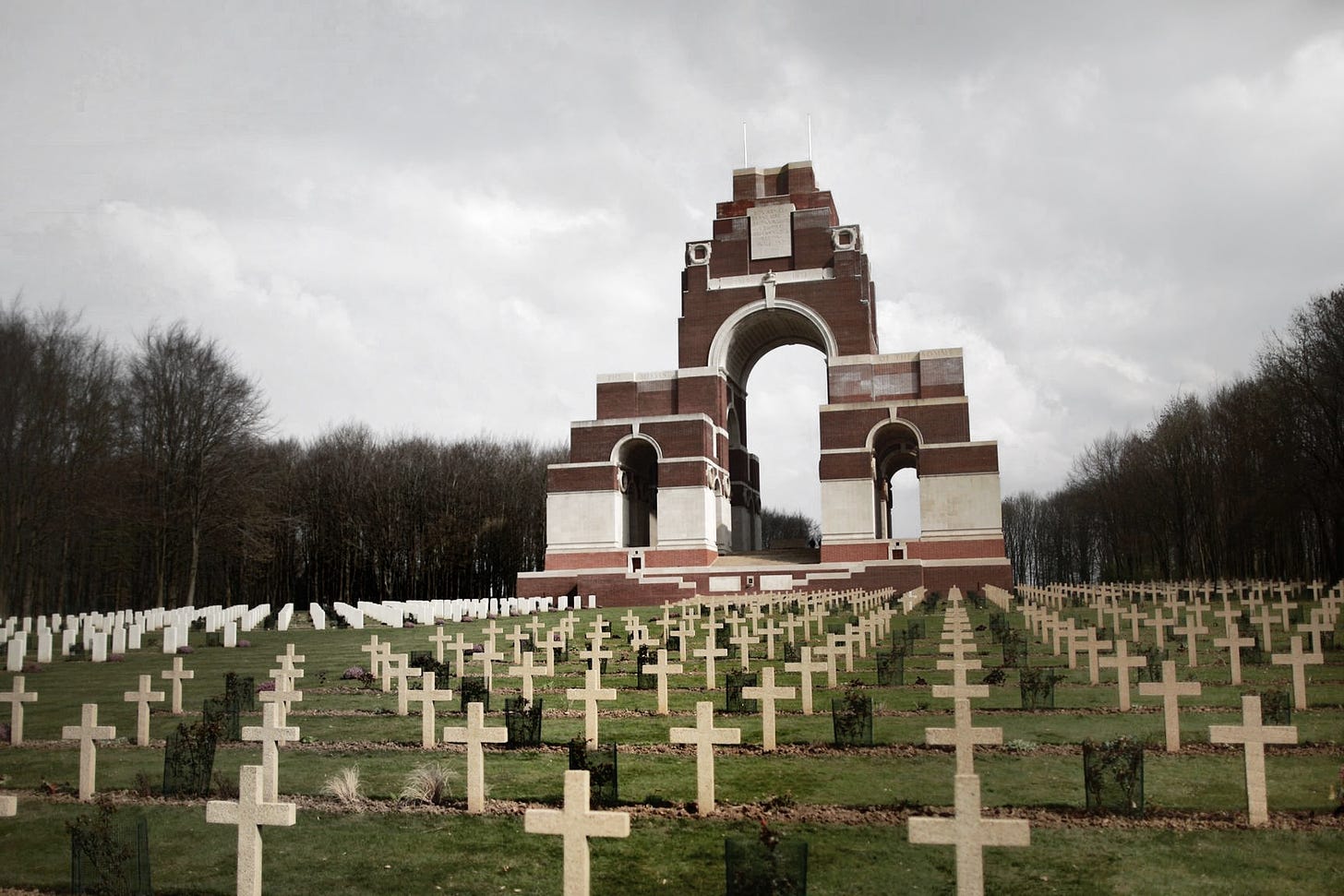
The Somme for the British and Verdun for the French occupy a prominent place in history. They not only represent loss, but are also a clear example of the futility of war. In the case of the First World War, the nature of the conflict was completely eclipsed by its consequences. A large majority do not know what led the Triple Entente and the Central Powers to that four-year confrontation8, but almost everyone knows the human consequences of that war.
It used one of the first commercial colour photography systems: the autochrome plate of the Lumière brothers.
The map does not show it, but Brazil entered the war in October 1917.
By Allies, I mean the Triple Entente, which was led by Russia, France, and the British Empire, although it also included other minor powers such as Belgium and Serbia.
The battle of the Somme is extensively documented graphically. The images seem to me harsh and do not contribute much to what I want to tell today, but you can have a look at some collections like this one.
Casualties include the dead, the wounded and the missing.
The figures vary greatly, but that is the most widely accepted approximation at present.
Either regular football (soccer) or American football. Smaller than both.
It is easy to know this if you read about the conflict; however, a large majority of society does not understand the nature of the First World War with the level of detail that it knows about the ideological conflict of the Second World War.


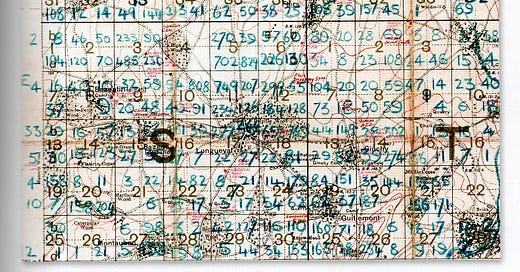


Exquisite unique archival sources. Much appreciated!
Thank you. My father’s uncle was killed on the first day of the Somme. He was with the 1st Battalion of the Royal Inniskilling Fusiliers. They left their trenches and walked into German machine gun fire from emplacements in Y Ravine in front of Beaumont-Hamel. There were over 700 in the battalion at the beginning of the day and around 250 survived. His body was never found.